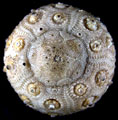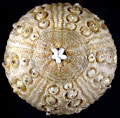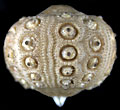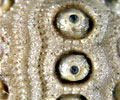The Echinoid Directory
Goniocidaris (Discocidaris) Doderlein, 1885, p. 80
| Diagnostic Features |
|
|---|---|
| Distribution | Recent, Indo-Pacific. |
| Name gender | masculine |
| Type | Discocidaris (Cidaris) mikado Doderlein, 1885, p. 8, by original designation. |
| Species Included |
|
| Classification and/or Status |
|
| Remarks |
|





